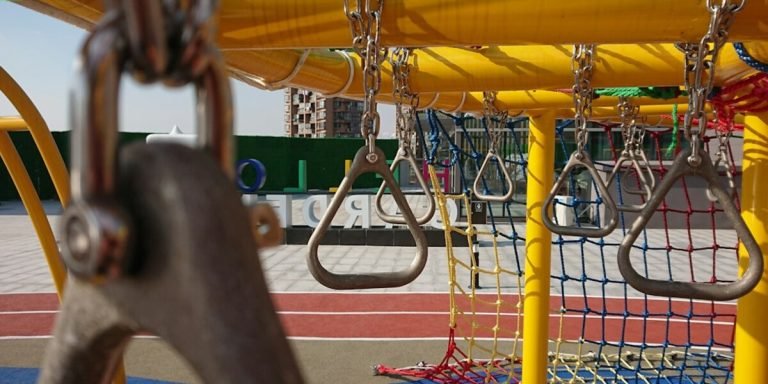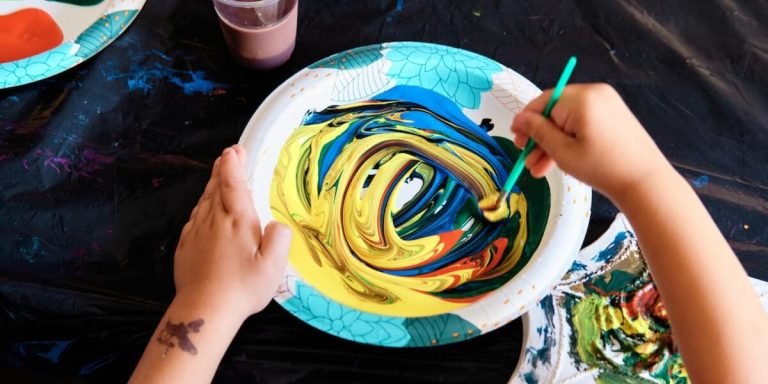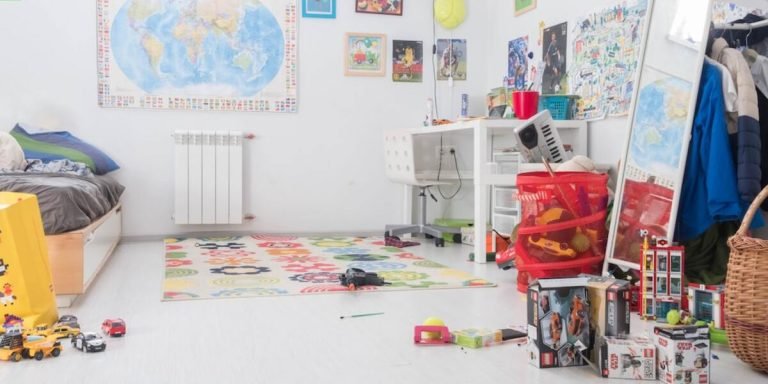Play is the Work of the Child: Unveiling its Role in Early Education Development
The phrase “play is the work of the child” embodies one crucial aspect that has shifted paradigms in early educational development. Coined by Dr. Maria Montessori, an influential educator in early childhood education, it highlights how children learn and grow through play-based activities organically embedded in their routine.
This perspective transforms our understanding of education from a formalized institution-driven approach to a more naturalistic view where learning springs from every corner of a youngster’s world. Activity Based Learning (ABL) cultivates this mindset not only efficiently but also effectively appealing to the unique cognitive abilities at these formative stages.
Did you know?
Did you know that according to the National Association for the Education of Young Children, play is a crucial part of development as it influences children’s cognitive and social skills? During play, kids learn how to interact, solve problems and develop creativity.
Embracing Play as a Pedagogical Tool
In a world advancing towards increased digitalization, it becomes necessary to reconsider traditional teaching methodologies. This reevaluation is particularly crucial in the context of childhood education. “Play”, often regarded as mere amusement for children, carries significant educational potential which we can no longer afford to overlook.
Technology has opened numerous doors for innovative pedagogical approaches and activity-based learning emerges at the forefront. It creates an engaging environment where play isn’t just recess but aids skill development while keeping things fun and interesting. The mantra that ‘play is the work of a child’ echoes strongly here; play fosters creativity, problem-solving skills and emotional intelligence among other competencies essential in this globalized era.
Embracing play as a tool not only broadens our understanding of comprehensive education but also aligns schooling with real-world scenarios kids witness daily on screens around them – be it smartphones or smart boards! By integrating softwares designed specifically for interactive learning into curricula, educators are building bridges between academics & enjoyment; recognizing how technology empowers us to make ‘work’ more like ‘play’. Through intuitive games or captivating virtual lessons – applying concepts becomes second nature instead of daunting task!
Marrying tech-savvy tools with tried-and-true theories about developmental psychology gives rise to classrooms filled with laughter yet buzzing productively: Here’s where playful meets purposeful!
Integrating Activity-Based Learning in Early Childhood Education
The integration of activity-based learning in early childhood education has been gaining traction. It is facilitated by the idea that “play is the work of the child”, a concept every educator, and parent must appreciate.
Activity-based learning enhances conceptual understanding among children while fostering their creativity and problem-solving skills. Children are naturally inclined to explore, investigate and engage with their environment through play activities. These engagement forms involve physical manipulation of objects or participating in scenario enactments helping children understand abstract concepts easily.
As we journey deeper into 2023’s educational advancements, technology plays an increasingly pivotal role within this sphere.
Interactive smartboards replace traditional blackboards bringing lessons alive as they become more immersive experiences rather than just rote memorization sessions for young learners. For instance, when teaching about shapes instead of relying on pictures from books or drawn figures on chalk boards; real-time drawing apps allow students to physically draw on interactive screens refining motor skills alongside cognitive development!
The Role of Structured Play in Cognitive and Social Development
Understanding the essence of structured play is crucial to comprehend its role in facilitating cognitive and social development. The quote “play is the work of the child” aptly presents how children engage with their surroundings, explore materials and construct meaning which ultimately aids their learning process.
Structured Play refers to activities where there are definite rules or guidelines for children to follow while engaged in playful experiences. However, this doesn’t curb creativity; instead it provides a platform that fosters exploration within set boundaries.
With technology’s integration into education constantly evolving each year, 2023 has seen an uprise in activity-based learning platforms furthering structured play concepts. These can range from simulation games mimicking real-life situations, coding challenges inducing problem-solving skills or even interactive storytelling applications enhancing imagination power among young minds.
The use of such smart gadgets encourages kids’ inherent curiosity while guiding them towards academic knowledge indirectly through fun-filled game strategies – indeed proving true that ‘play is the work of a child’. Besides these additions enriching cognitive growth like memory building, attention span enhancement etc., they also promote pro-social behaviour promoting collaboration thereby strengthening interpersonal relations necessary for emotional well-being.
Innovations in Child-Centered Educational Practices
Embodying the philosophy that “play is the work of a child”, contemporary educational practices have taken significant strides in fostering this principle more effectively through technological integration. In today’s digital age, where technology permeates every facet of our lives, its application to education has profound implications for enhancing and transforming children’s learning experiences.
In response to traditional pedagogical methods which might sometimes limit creativity and stifle individuality, innovations are being made towards creating a more child-centered approach – one that emphasizes active engagement and experiential learning. Technology plays an instrumental role here by providing interactive platforms for students. Interactive software programs or applications can offer immersive environments where kids learn core subjects while engaging with virtual simulations as they play — subtly blurring the lines between playing and studying.
Incorporating Game-Based Learning into Curriculum Design
Game-based learning, or simply integrating play into the educational process, is a transformative approach to traditional classroom settings. Adhering to Maria Montessori’s adage that “play is the work of the child,” educators today are innovatively crafting curricula around this ideology.
By embracing activities and games as vital pedagogical tools in 2023, teachers can tap into children’s innate curiosity and creativity. This integration leads not only to engagement but also enhances knowledge retention.
Remember how we learned about volcanoes by creating one with baking soda and vinegar? That wasn’t just fun; it embedded information more firmly than listening passively would have done. Similarly, technology offers endless possibilities for game-based learning today – from interactive simulations that elucidate math concepts to virtual reality experiences teaching history immersively.
Children’s predilection for digital devices makes tech-integrated education particularly effective – after all they instinctually navigate these interfaces with ease. As such online platforms support diverse learner types- auditory learners may thrive through podcasts while kinesthetic leaners could excel via VR based activities.
Utilizing Technology for Interactive Learning Experiences
In the realm of childhood education, “play is the work of the child” has taken on a new and exciting dimension with advancements in technology. The integration of tech tools into learning environments has shifted educational approaches towards interactive experiences that engage young minds.
Similarly, Augmented Reality (AR) applications have opened doors to immersive educational engagements where lessons come alive beyond textbook confines. Students can embark on virtual field trips exploring galaxies or dissecting frogs without leaving their classrooms through AR-enabled devices! Such experiences are not only engaging but also foster curiosity-driven exploration—capitalizing upon natural instincts where play serves as an inherent directive in a child’s life.
Learning management systems (LMS), too, provide comprehensive toolkits including live sessions, recorded videos & quizzes which cater to varied learner types across different time zones providing flexibility besides fostering an atmosphere conducive for self-paced learning amidst comfort zones.
Coding classes targeted at kids employ playful project-based tasks encouraging analytical thought processes while mastering programming languages—a crucial 21st-century skillset!
Lastly yet importantly is leveraging artificial intelligence-powered learning programs customized per student requirements ensuring individual gaps addressed effectively leading to fewer frustrations more so amongst struggling learners contributing significantly towards creating inclusive classrooms!
Assessing the Impact of Activity Based Methodologies on Young Learners
Assessing the impact of activity-based methodologies on young learners in today’s age paints a vivid picture of progress and development. It is no secret that children learn best when they are allowed to explore, create, and play – putting forth the credo of “play is the work for child”. Technology integration has made this easier by providing an interactive platform where youngsters can actively engage with educational materials.
Activity-based learning propelled by technology holds immense value as it enables kids to become active participants rather than passive receivers in their education journey. This method allows them to construct knowledge based on real-world experiences delivered through technologically advanced mediums such as virtual reality or gamified mobile apps. The shift from traditional pedagogical techniques towards activities backed by tech tools provides a more holistic approach in ensuring all-round cognitive development.
Moreover, such technological advancements encourage collaborative problem solving among students while stimulating creativity and critical thinking- crucial skills needed not just acadically but also for surviving progressively digital world . Therefore, assessing these methods’ impact helps educators gauge effectiveness whilst opening new avenues to enhance childhood education through continuous innovation further.
Measuring Outcomes: Engagement, Knowledge Retention, and Skill Acquisition
In the context of activity-based learning, “play is the work of the child” rings remarkably true. With technology integration supplementing traditional education systems in 2023, it becomes critical to measure three key outcomes: engagement level, knowledge retention and skill acquisition.
Firstly, consider student engagement in our digitally driven era. Young learners effortlessly navigate apps, sandbox games, or animated books. Gauging their attention span challenges educators worldwide. Interactive activities leveraging tech tools designed for education can tackle this issue.
For example:
- Virtual tours allow students to explore historical sites beyond the classroom.
- Coding programs enable them to create their own computer games or animations, turning play into productive work.
Furthermore, when we talk about knowledge retention within activity-based methodologies –the idea isn’t mere memorization of facts but comprehension and application abilities too. This objective aligns rightly with EdTech platforms such as online quizzes that offer instant feedback besides incorporating gamification elements like badges/leaderboards which spur repeated attempts at mastery levels by children—thereby solidifying learned concepts further.
Comparative Analysis of Traditional vs. Play-Oriented Instructional Approaches
Traditional methods of instruction have dominated classrooms for centuries, emphasizing rote memorization and often using passive forms of learning. Students learn facts presented by teachers or textbooks without much room for exploration or creativity.
This novel learning process involves real-life situations making abstract concepts more understandable while fostering necessary skills like problem-solving and critical thinking among students. Learning becomes fun when it resembles playing; hence kids are naturally inclined towards absorbing information.
Streamlining gadgets’ use with classroom activities doesn’t just make lessons engaging but also equips kids better to navigate through today’s digitally-driven universe. Moreover, interactive tech-tools personalize student experiences facilitating one-on-one pace adapting help moulding future-ready individuals!
Conclusion
In a nutshell, “play is the work of the child,” and it carries developmental dividends that fuel their cognitive, emotional, social and physical growth. As parents or educators, understanding this illuminating concept nudges us to facilitate an environment where our children can explore freely within secure boundaries. This not only ensures they have fun but also fosters life skills such as problem-solving abilities and resilience.
Don’t stop here with your journey into childhood education development; there’s so much more to learn! We invite you to browse through our website for more enlightening articles and resources. Whether you are seeking expert advice on educating young minds or looking for support in navigating parenthood with ease – we’ve got something valuable lined up just for you!







